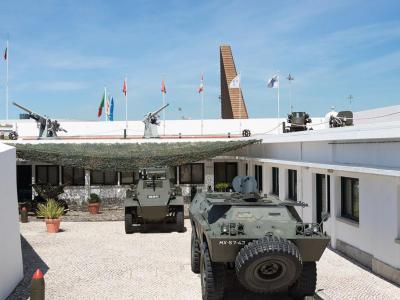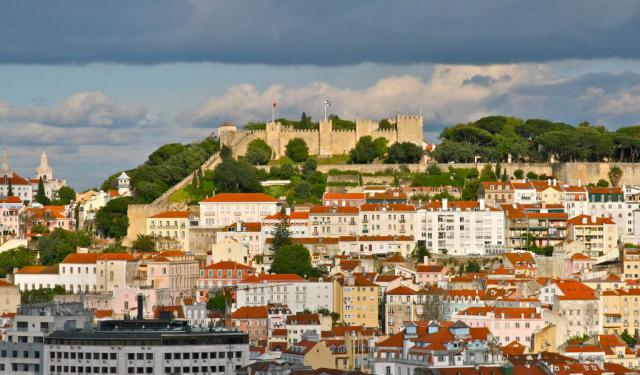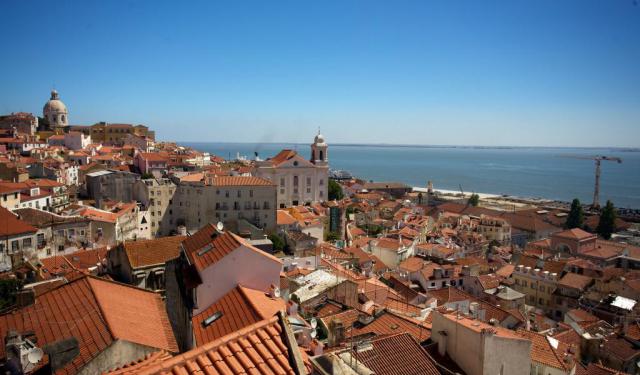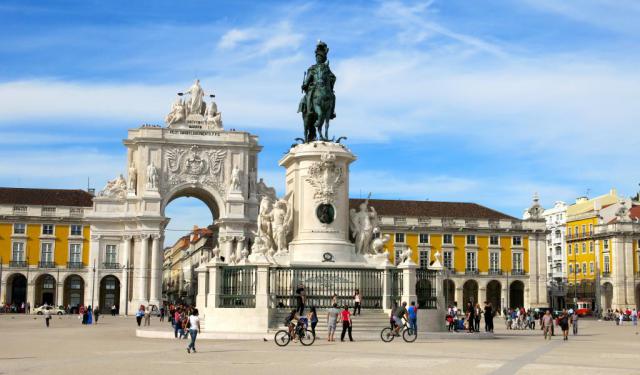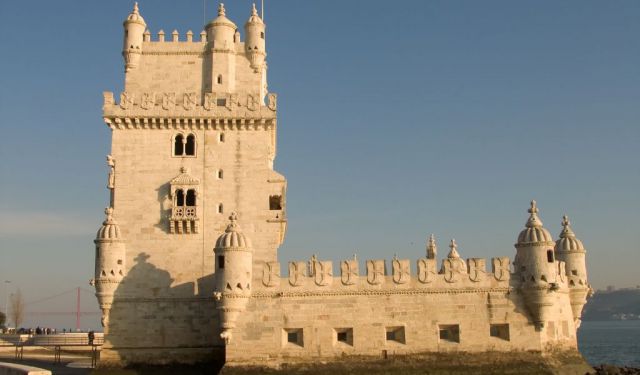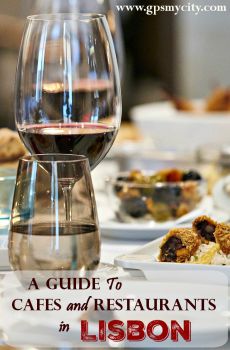Forte do Bom Sucesso & Museu de Combatente (Fort of Good Success & Combatant's Museum), Lisbon
Once utilized to safeguard Lisbon against potential threats, the Fort of Good Success now serves as a museum that encapsulates a significant portion of Portugal's military history. Adjacent to it stands a visually striking monument honoring Portuguese soldiers who fought overseas-an area designed for solemn reflection on the toll of military conflicts.
The construction of the Fort dates back to 1780-82, under the supervision of General Guilherme de Vallerée, and it was equipped with various types of artillery to fortify its defensive capabilities. Shortly thereafter, a residence for the Fort's governor was incorporated within its perimeter. The Fort's polygonal layout mirrors the contours of the right bank of the River Tagus.
During the Portuguese Colonial War (1961-75), the Fort served as the headquarters of the Military Postal Service. Following the Carnation Revolution on April 25, 1974, which brought an end to the authoritarian Estado Novo regime, it became the base for the Command of the Military Intervention Group-a body established by the Revolutionary Council to maintain law and order. Subsequently, it served as the headquarters for the 25th of April Association, an organization uniting the military members who initiated the Carnation Revolution.
In 1999, the Fort was formally transferred to the Portuguese League of Combatants. The museum, overseen by the League, features a permanent indoor exhibition and three outdoor areas displaying equipment associated with various branches of the Armed Forces. The permanent exhibition encompasses World War I, the colonial campaigns (referred to as "overseas campaigns" in Portugal), and peacekeeping missions. Additionally, the museum offers social spaces, conference and screening rooms, as well as a bar.
Why You Should Visit:
Certainly worth the €4 admission fee, and the vista from this vantage point is genuinely nice.
The construction of the Fort dates back to 1780-82, under the supervision of General Guilherme de Vallerée, and it was equipped with various types of artillery to fortify its defensive capabilities. Shortly thereafter, a residence for the Fort's governor was incorporated within its perimeter. The Fort's polygonal layout mirrors the contours of the right bank of the River Tagus.
During the Portuguese Colonial War (1961-75), the Fort served as the headquarters of the Military Postal Service. Following the Carnation Revolution on April 25, 1974, which brought an end to the authoritarian Estado Novo regime, it became the base for the Command of the Military Intervention Group-a body established by the Revolutionary Council to maintain law and order. Subsequently, it served as the headquarters for the 25th of April Association, an organization uniting the military members who initiated the Carnation Revolution.
In 1999, the Fort was formally transferred to the Portuguese League of Combatants. The museum, overseen by the League, features a permanent indoor exhibition and three outdoor areas displaying equipment associated with various branches of the Armed Forces. The permanent exhibition encompasses World War I, the colonial campaigns (referred to as "overseas campaigns" in Portugal), and peacekeeping missions. Additionally, the museum offers social spaces, conference and screening rooms, as well as a bar.
Why You Should Visit:
Certainly worth the €4 admission fee, and the vista from this vantage point is genuinely nice.
Want to visit this sight? Check out these Self-Guided Walking Tours in Lisbon. Alternatively, you can download the mobile app "GPSmyCity: Walks in 1K+ Cities" from Apple App Store or Google Play Store. The app turns your mobile device to a personal tour guide and it works offline, so no data plan is needed when traveling abroad.
Forte do Bom Sucesso & Museu de Combatente (Fort of Good Success & Combatant's Museum) on Map
Sight Name: Forte do Bom Sucesso & Museu de Combatente (Fort of Good Success & Combatant's Museum)
Sight Location: Lisbon, Portugal (See walking tours in Lisbon)
Sight Type: Museum/Gallery
Guide(s) Containing This Sight:
Sight Location: Lisbon, Portugal (See walking tours in Lisbon)
Sight Type: Museum/Gallery
Guide(s) Containing This Sight:
Walking Tours in Lisbon, Portugal
Create Your Own Walk in Lisbon
Creating your own self-guided walk in Lisbon is easy and fun. Choose the city attractions that you want to see and a walk route map will be created just for you. You can even set your hotel as the start point of the walk.
Sao Jorge Castle to Lisbon Cathedral Walking Tour
Spreading on the slope between Saint George's Castle (Castelo de Sao Jorge) and the Tagus River, the oldest neighborhood of the Portuguese capital, Alfama, captivates visitors with its rich cultural heritage and picturesque ambiance. The area is home to numerous historical attractions and as such makes a perfect destination for a classic Lisbon walk!
Perhaps the best starting point for it... view more
Tour Duration: 1 Hour(s)
Travel Distance: 1.1 Km or 0.7 Miles
Perhaps the best starting point for it... view more
Tour Duration: 1 Hour(s)
Travel Distance: 1.1 Km or 0.7 Miles
Alfama Walking Tour
Alfama, the oldest district of Lisbon, spreads downhill along the Tagus River. It retains a charmingly labyrinthine layout with narrow alleys and steep streets. Under Islamic rule, this part of the city was increasingly inhabited by fishermen and the poor. The reputation of being a poor area still lives on. The name Alfama derives from the Arabic al-ḥamma, which means "hot fountains"... view more
Tour Duration: 2 Hour(s)
Travel Distance: 3.0 Km or 1.9 Miles
Tour Duration: 2 Hour(s)
Travel Distance: 3.0 Km or 1.9 Miles
Lisbon Introduction Walking Tour
Lisbon, the capital city of Portugal, is a fascinating blend of history, culture, and breathtaking viewpoints. Its name is believed to have originated from the Phoenician term "Allis Ubbo", which means "safe harbor," reflecting the city's importance as a maritime hub since ancient times. Nestled at Europe's western edge and abundant in architectural styles, Lisbon... view more
Tour Duration: 2 Hour(s)
Travel Distance: 2.4 Km or 1.5 Miles
Tour Duration: 2 Hour(s)
Travel Distance: 2.4 Km or 1.5 Miles
Belem Walking Tour
Also known as Santa Maria de Belem, the district of Belem is one of the most visited in Lisbon. Situated not far from the city center, it lines the Tagus River and is the original location of Lisbon's port – the starting point of the many great voyages of discovery by Portuguese explorers, such as Vasco da Gama – departed from here for India in 1497, and Pedro Alvares Cabral – for... view more
Tour Duration: 2 Hour(s)
Travel Distance: 3.0 Km or 1.9 Miles
Tour Duration: 2 Hour(s)
Travel Distance: 3.0 Km or 1.9 Miles
Useful Travel Guides for Planning Your Trip
17 Uniquely Portuguese Things to Buy in Lisbon
Formerly a major colonial power, Portugal has accumulated great knowledge in craftsmanship. While in Lisbon, you can treat yourself to a vast variety of quality things: wines, ceramics, jewellery, leather goods, books and many more. Most shops in Lisbon open at 9 or 10am, and close in the evening at...
Top 8 Cafes and Restaurants in Lisbon
Experience Lisbon as a local by enjoying typical Portuguese dishes at the best restaurants throughout the city at a price you can afford. Take away the overwhelming pressure of deciding where to eat in a city as dynamic and riveting as Lisbon by allowing this guide to suggest local restaurants with...
